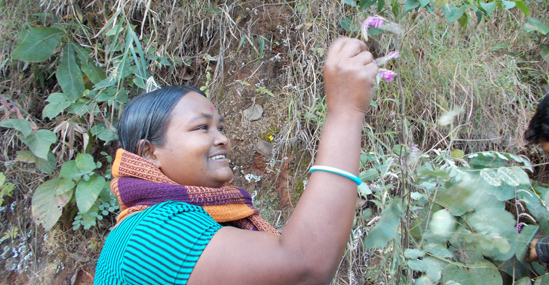

Puneeta Jain
rajendraj823@gmail.com
In the oral song-tradition, the Adivasi’s innate sense of life, nature-love, culture, the original smell of locality is present, which has been expressed with the music of their soul and the natural rhythm of life. Whereas the Adivasi poetry being written in the present environment is the voice of resistance against the trauma inflicted on their dignity. Along with this, pictures of contradictions of past and present situations, cultural transition, social strife, conflict, and torture have also been engraved in it. The tragedy of repeated displacement from their original habitat not only gives rise to pain but also gives rise to a deep concern about the future, in which not only the forest but also the entire nature, Adivasi culture, language, and identity lies in the scarcity. Adivasi poets are registering presence in Hindi to give expression to this fickle voice. The Adivasi community, detached from its place, being rootless, was forced to face the horrific conditions, kept going through repression, violence, and torture, the Hindi world is yet to be acquainted with its vivid form.
This community, uprooted from its basic environment, is not only disconnected from its natural economic self-reliance, but is also isolated from the cultural and social environment, lifestyle and natural environment. In such a situation, the struggle for their identity is also a struggle for the identity to become fragmented. In the event of subordination of dominant culture, language, and way of life, it is natural for the concern of identity crisis to become more intense. In fact, in the face of cultural and social oppression, oppression, and injustice, poetry is the place where the voice of the truth of torture gets expanded. Present-day Adivasi poetry, while giving voice to its cultural specificity and social, economic, cultural injustice, serves to create space for a rethinking of the relationship between nature and man. Vandna Tete is an important link of this voice, she not only firmly puts Adivasi thought and vision in front of the Hindi world but also impresses with her creativity. Vandna Tete’s thinking about Adivasidom is very original and intense. She file objections clearly keeping their point of view.
The first poem of Kharia-speaking Vandna Tete was published in the magazine ‘Samjhauta’ in the year 1984-85. ‘Konjoga’ (2015) is her first collection of poetry. ‘Konjoga’ is a mountain that is the cultural site of the Kharia Adivasi community and is located in the Gumla district of Jharkhand. It is necessary to know the views of the Adivasi poets as to how they see poetry. Vandna Tete has a clear logic and point of view of rejecting the established norms and aesthetics of literature and looking at poetry from her point of view.
“I never thought whether the poem I wrote was good or not. Poetry or not. I feel that just as flowers bloom naturally on plants, sun, moon, stars and clouds in the sky create beautiful art, similarly the feelings and thoughts of a person get hung on blank pages through words. What should be the patterns of poetry or what characteristics are necessary in poetry from a poetic point of view, these are all supremacist obstacles. The natural world of poetry can be protected only by removing such feudal and critical supremacy from the non-Adivasi poetic tradition. As is the Adivasi poetry-tradition where there is no critic, only a collective worldview in which individuality and collectivity are so intertwined that the two are not separated like the ‘milk and water’ philosophy of the non-Adivasi world. That’s why my poem looks like ‘Koroya’ to me. Koroya is a white flower of the forest that blooms in clusters. It does not have a very attractive fragrance, but it is dear to us.” (Konjoga, p.6)
In fact, separated from the dominant poetic urges, there is a very simple and straightforward narration tradition of Adivasi folk-voice, without accompaniment and construction. In this natural poetic work, there is a folk-scent of the locality, there is the Adivasi life-world, there are the natural voices of the primitive culture settled between the forest and the nature, the festivals immersed in the proximity of trees, flowers, rivers, mountains, Festivals and knowledge are traditions and the woes and concerns of their extinction are the natural voices of social justice.
In the poetic work of Adivasi thinker Vandna Tete, instead of poetic patterns and Hindi poetic idioms, there is an ornate and natural presentation of Adivasi cultural features and challenges, which if seen, will find a conscious Adivasi thought-vision and a strong voice related to self-realization. She is expressed in poetry presented in Hindi through a natural art-work combining the Kharia language and its lyricality with its locality-
“हां, हम सुन रहे हैं लोहे का गीत/ नेतरहाट के पाट पर ए दीदी लसय लसय… /हाँ, हम सब भी कमान तान रहे हैं /डोम्बारी पहाड़ पर ए संगी रियो रियो /हाँ, हमारे भी पैर थिरक रहे हैं /बीरू दिसुम में ए सांगो धिरोम धिरोम।“ (वही पृष्ठ-85)
Please Share and Support


